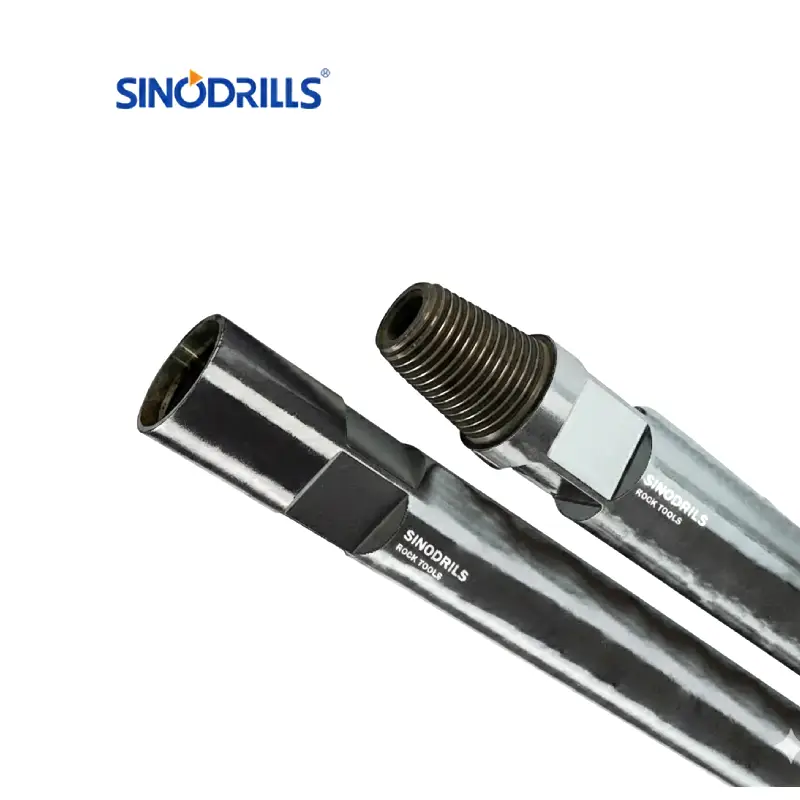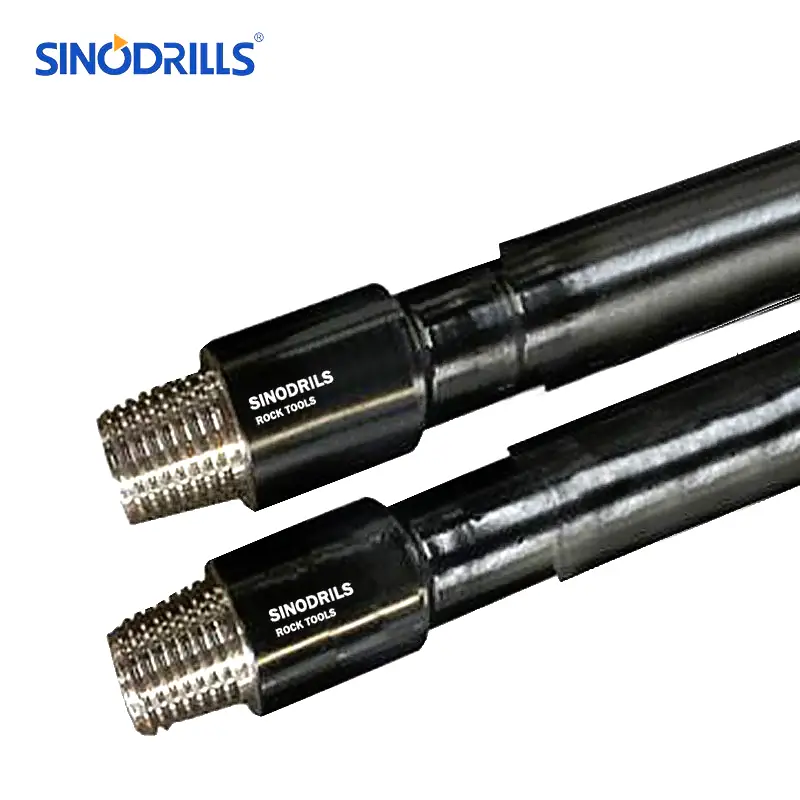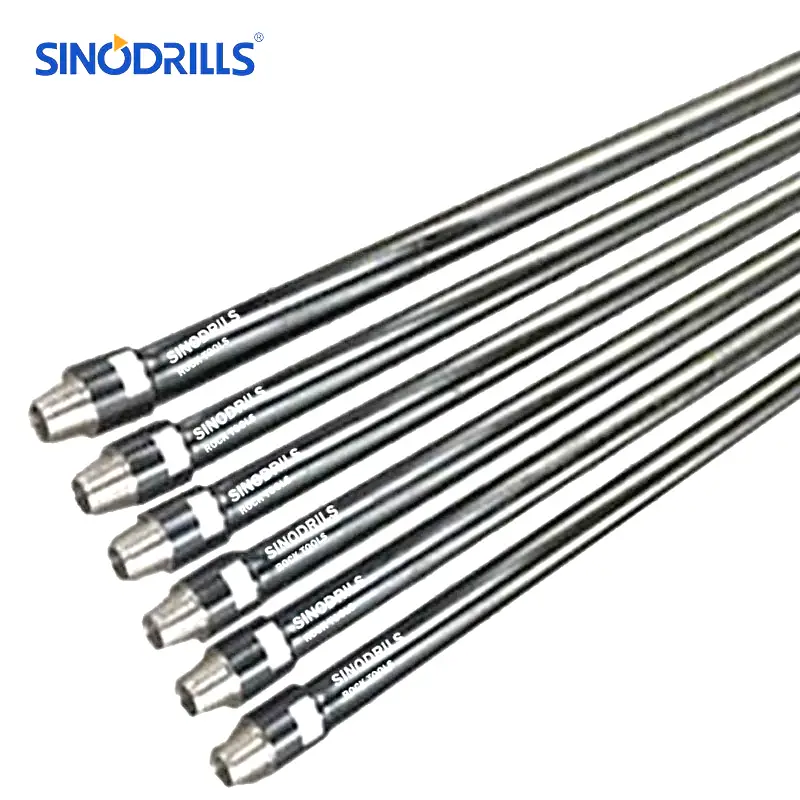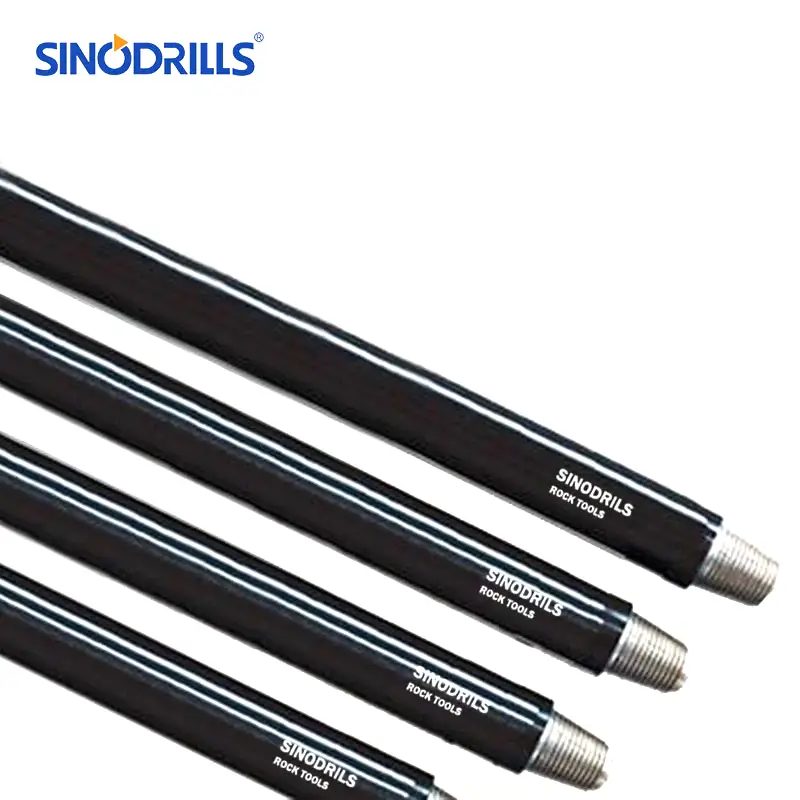Drill pipe inspection is a critical step in maintaining safe and efficient drilling operations. Regular inspections help detect wear, cracks, and other defects early, preventing failures that could lead to costly downtime or accidents. Understanding common defects ensures drilling crews can take proactive measures to protect equipment and personnel.
Identifying defects in drill pipes requires knowledge of the signs and the right inspection techniques. From thread damage to corrosion and surface wear, each issue can compromise performance. This guide explores the most common drill pipe defects and provides practical tips for recognizing them, helping operators maintain reliability and extend the service life of their equipment.
What Matters Drill Pipe Quality
Recommended Drill Pipes
Drill pipe quality is crucial for safe, efficient, and reliable drilling operations. Premium drill pipes ensure durability, withstand extreme pressures, and reduce the risk of failures. Understanding the factors that determine drill pipe quality helps operators choose the right products, optimize performance, and protect both equipment and personnel during demanding drilling projects.
- Material Strength: The strength of the steel used in drill pipes determines their ability to withstand torque, axial loads, and downhole pressures. High-quality materials reduce the risk of deformation, fractures, and failure, ensuring long-lasting performance under challenging drilling conditions.
- Threading Precision: Accurate threading is critical for secure connections between drill pipes. Precision threads prevent leaks, maintain joint integrity, and allow efficient torque transfer. Poorly machined threads increase the likelihood of joint failure, compromising safety and operational efficiency.
- Corrosion Resistance: Drill pipes must resist corrosion from water, chemicals, and other downhole fluids. Quality pipes with protective coatings or treated steel maintain structural integrity, reduce maintenance needs, and extend service life, especially in harsh oil and gas environments.
- Compliance with Standards: Adherence to API and other industry standards ensures consistent performance and reliability. High-quality drill pipes meet rigorous specifications, giving operators confidence in their equipment’s ability to handle extreme pressures, temperatures, and demanding drilling scenarios.
- Inspection and Testing: Rigorous inspection and testing processes, such as non-destructive testing and dimensional checks, confirm pipe quality. These measures detect defects early, ensuring only pipes that meet safety and performance standards are used in drilling operations.
Drill Pipe Inspection Method
Drill pipe inspection is essential to ensure safety, reliability, and efficiency in drilling operations. Regular inspections help detect wear, corrosion, cracks, and thread damage before they lead to failures. Using proper methods, operators can maintain equipment, extend service life, and minimize downtime in demanding oil and gas projects.
Visual Inspection
Visual inspection is the most basic and immediate method for identifying obvious defects. We carefully examine the drill pipe surface, threads, and body for cracks, corrosion, dents, or other signs of wear. Regular visual checks help catch issues early, preventing accidents and costly equipment failure.
During visual inspection, operators use magnifying lenses, good lighting, and often magnified images to detect smaller defects. We also check for alignment and straightness, ensuring pipes meet operational standards. Proper training ensures inspectors recognize subtle signs of damage that could affect performance.
Ultrasonic Testing
Ultrasonic testing (UT) uses high-frequency sound waves to detect internal defects and wall thickness inconsistencies. We send sound waves through the pipe, which reflect differently from flaws, allowing early identification of cracks, corrosion, or erosion. UT ensures the pipe’s internal integrity without disassembly.
This method is especially effective for identifying subsurface defects invisible to the naked eye. We calibrate equipment to detect even small irregularities, providing detailed data on the pipe’s condition. Ultrasonic testing helps prevent failures in high-stress drilling environments.
Magnetic Particle Inspection
Magnetic Particle Inspection (MPI) is used to detect surface and near-surface cracks in ferromagnetic drill pipes. We magnetize the pipe and apply iron particles, which gather at defects, making them visible under proper lighting. MPI helps maintain pipe safety and performance.
MPI is highly effective for identifying hairline fractures and fatigue cracks. We ensure proper magnetization and particle application to detect even minor imperfections. Regular MPI allows for proactive maintenance and reduces the risk of unexpected drill pipe failures.
Dye Penetrant Testing
Dye Penetrant Testing (DPT) involves applying a colored liquid to the drill pipe surface, which penetrates cracks or pores. After a set time, we remove excess dye and apply a developer, revealing defects clearly. DPT is cost-effective and precise for surface inspections.
This method is suitable for identifying small surface cracks and flaws that could compromise drill pipe integrity. We use DPT to supplement other inspection methods, ensuring a comprehensive evaluation. Regular use helps prevent operational failures and improves overall safety.
Thread Inspection
Thread inspection ensures the connections of drill pipes remain secure and leak-free. We examine thread profiles, check for wear, and measure tolerances using gauges or specialized tools. Proper thread maintenance is critical for torque transfer and safe drilling operations.
During thread inspection, we look for deformation, galling, or corrosion that could weaken the joint. Accurate assessment prevents operational disruptions and ensures the drill pipe functions reliably under high stress. This inspection is essential for both new and in-service pipes.
How Often Should Drill Pipe Be Inspected?
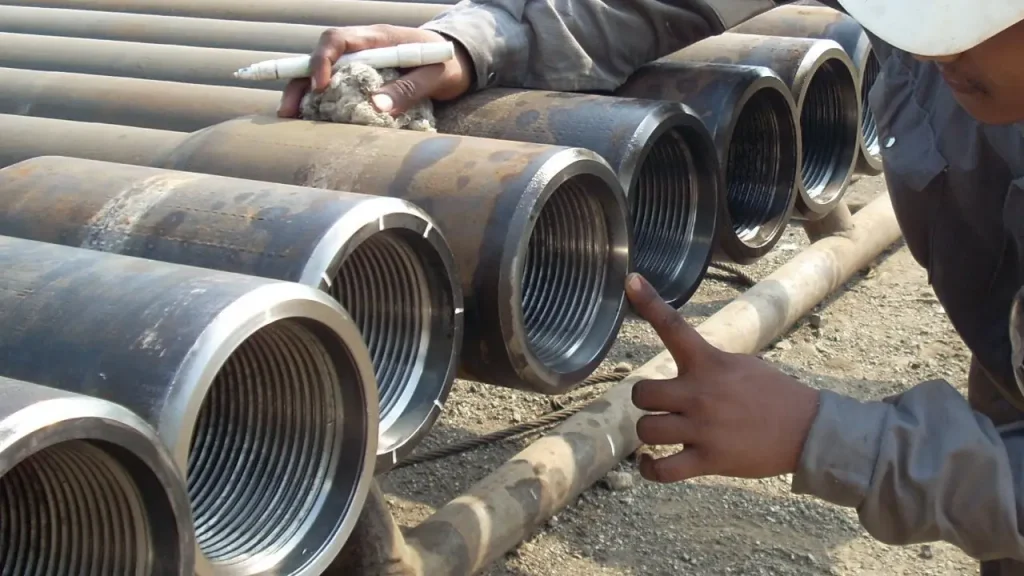
Regular drill pipe inspection is essential to maintain safety, performance, and reliability in drilling operations. The frequency depends on usage intensity, well conditions, and pipe age. Consistent inspection schedules help detect wear, corrosion, and defects early, reducing downtime, preventing accidents, and extending the service life of your drill pipes.
- Before Each Job: We inspect drill pipes prior to every deployment to ensure they are free of visible defects, corrosion, or thread damage. Pre-job inspections help prevent failures during drilling, ensuring safety and operational efficiency from the start.
- During Operations: Drill pipes should be monitored regularly during extended drilling operations. We conduct periodic checks for wear, straightness, and joint integrity. Continuous inspection helps detect emerging problems early, preventing costly downtime or accidents.
- After Each Run: Post-run inspections are crucial for identifying damage caused during drilling. We carefully examine pipes for fatigue, erosion, or deformation. Timely post-run inspections allow immediate maintenance, replacement, or repair, preserving pipe integrity for future use.
- Scheduled Comprehensive Inspections: Beyond routine checks, we recommend thorough inspections at set intervals based on API standards or operational experience. These include ultrasonic testing, magnetic particle inspection, and thread analysis to detect subtle defects and ensure long-term reliability.
- Based on Pipe Age and Usage: Older or heavily used drill pipes require more frequent inspections. We assess service history, operational stress, and cumulative wear to determine inspection frequency, ensuring pipes remain safe and functional throughout their lifecycle.
Common Drill Pipe Defects
Understanding common drill pipe defects is essential to ensure safe, efficient, and reliable drilling operations. Defects can compromise pipe integrity, leading to downtime, accidents, and costly repairs. Regular inspection and maintenance help identify issues early, keeping your drill pipes in optimal condition and extending their service life.
- Cracks and Fractures: Cracks can occur due to fatigue, high stress, or impact during drilling operations. We inspect pipes carefully to detect hairline fractures or larger cracks, preventing failures, ensuring safety, and maintaining operational efficiency in demanding downhole environments.
- Thread Damage: Worn, deformed, or corroded threads can compromise pipe connections. We monitor thread integrity during inspections to ensure secure, leak-free joints, reducing the risk of separation, torque loss, and operational downtime during drilling operations.
- Corrosion and Rust: Exposure to water, chemicals, and other downhole fluids can cause corrosion. We assess pipes regularly for signs of rust or pitting, which can weaken the pipe wall and reduce its service life if not addressed promptly.
- Erosion and Wear: High-velocity fluids and abrasive materials can erode the pipe’s interior and exterior surfaces. We identify worn areas to prevent leaks, maintain structural integrity, and ensure efficient drilling performance without unexpected failures.
- Deformation and Bending: Excessive loads or improper handling can bend or deform drill pipes. We check for straightness and alignment, ensuring pipes maintain proper geometry, reduce stress concentration, and operate safely under demanding drilling conditions.
How to Identify Drill Pipes?
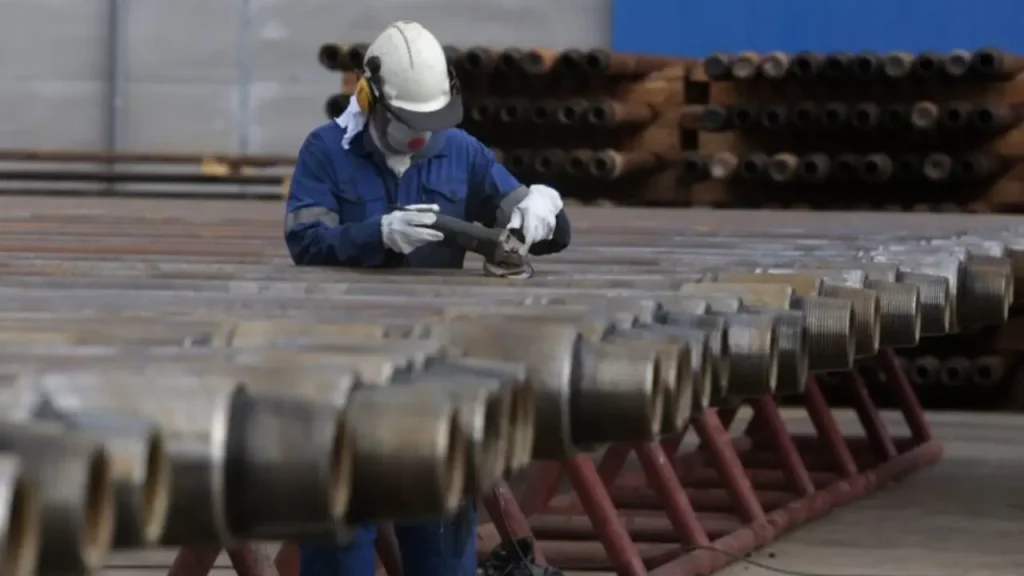
Properly identifying drill pipes is essential for safe and efficient drilling operations. Each pipe has specific markings, dimensions, and connection types that indicate its grade, size, and threading. Accurate identification ensures compatibility with rigs and other equipment, prevents operational errors, and helps maintain consistent performance throughout drilling projects.
- Check Pipe Markings: Drill pipes are marked with manufacturer information, grade, and specifications. We carefully read these markings to verify the pipe’s material, strength, and compatibility with drilling requirements, ensuring proper use and adherence to industry standards.
- Measure Dimensions: Length, outer diameter, and wall thickness are key identifiers. We measure these dimensions accurately to confirm the pipe meets operational specifications, fits the rig, and performs reliably under high-pressure and high-stress drilling conditions.
- Inspect Thread Type: The threading at each end indicates connection compatibility. We examine the thread type, profile, and condition to ensure secure joints, proper torque transfer, and leak-free performance during drilling operations.
- Assess Material Grade: Drill pipe material grades determine strength and resistance to wear or corrosion. We verify steel grade markings and properties to ensure the pipe can handle downhole pressures, torque, and environmental conditions safely.
- Look for Unique Features: Some drill pipes have special coatings, wear-resistant surfaces, or internal linings. We identify these features to select the right pipe for specific applications, enhancing durability, efficiency, and overall drilling safety.
Why Choose Our Drill Pipes?
Our drill pipes are engineered for superior strength, precision, and durability, ensuring reliable performance in demanding oil and gas drilling operations. We focus on quality, safety, and customization, providing pipes that meet industry standards and deliver long-lasting results while minimizing downtime and maintenance costs.
- High-Quality Materials: We use premium steel and advanced manufacturing processes to produce drill pipes that withstand high pressure, extreme torque, and harsh downhole conditions, ensuring strength, durability, and reliable performance throughout their operational life.
- Precision Engineering: We ensure accurate threading and machining for secure, leak-free connections. Our precision engineering allows smooth torque transfer, reduces joint failure risk, and enhances overall drilling efficiency and safety.
- Customizable Specifications: We offer drill pipes in various lengths, diameters, grades, and connection types. Customization ensures compatibility with your rigs, operational requirements, and well conditions, delivering optimal performance and efficiency for every project.
- Reliable Performance: Our drill pipes maintain stability and integrity under high stress, heavy loads, and challenging drilling conditions. We design them to reduce downtime, improve productivity, and support safe, uninterrupted drilling operations.
- Global Support and Service: We provide technical assistance, installation guidance, and after-sales support to ensure drill pipe performance. Our team helps maintain safety, maximize efficiency, and deliver reliable solutions for drilling operations worldwide.
Conclusion
Regular drill pipe inspection is essential for maintaining operational efficiency and safety in oil and gas drilling projects. By recognizing common defects such as cracks, corrosion, and thread damage, drilling teams can take timely corrective action. Consistent inspection routines reduce downtime, prevent accidents, and extend the lifespan of your drill pipes.
Proactive identification of drill pipe defects not only protects your equipment but also enhances overall project productivity. Proper training, the right inspection tools, and adherence to industry standards ensure that potential problems are caught early. This helps maintain smooth drilling operations while minimizing costly repairs or replacements in the long term.
For reliable, drill pipes, get wholesale drill pipes from Sinodrills. We offer durable, precision-engineered pipes designed for performance and safety in demanding oil and gas environments. Partnering with Sinodrills ensures your drilling projects have the equipment they need for efficiency, durability, and long-lasting results.

